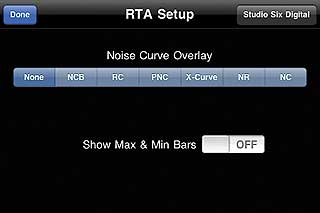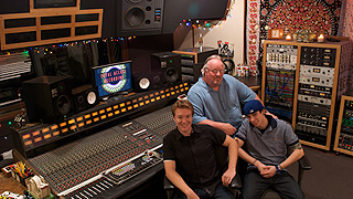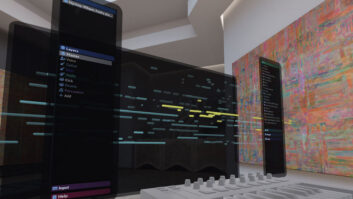
Favorite iPhone Audio Apps
Mix’s February 2010 issue looked at iPhone apps for professional audio, and we asked readers to tell us about their favorite audio apps. For more on this topic, go to mixonline.com/gear/newproducts/audio_new_assistant_engineer.
I have been a touring and recording musician for more than 30 years. In November 2009, I bought a 16GB iPod touch second-generation. I started loading it with free apps and then came across SPL Meter by Studio Six Digital. I soon discovered that Studio Six Digital was offering AudioTools. This app package includes what they call “Acoustics, Acoustic Analysis Tools.” In that portion of the bundle is a tool called RTA Real-Time Analyzer. RTA is worth every cent it costs to get the bundle—and then some. I wish I had this little package 30 years ago. It would have saved countless hours trying to help live sound engineers find the correct feedback frequencies. I take it to every venue. This is an exceptionally helpful tool at a very reasonable price for such a good piece of gear.
—Jim Nunally
Videogame Sound
In the March 2010 “TalkBack” section, we asked, “What is the most interesting sound design you’ve heard in a videogame—either online or in the box?”
I would say, without a doubt, the sound in [Konami Digital Entertainment’s PlayStation videogame] Silent Hill—any Silent Hill, really. My absolute favorite sound in any videogame was in Silent Hill 3. [Sound designer] Akira Yamaoka is a god to me.
—Paul
Value of Mastering
In the November 2009 “TalkBack” section, we asked readers to tell us how mastering has helped their projects in the past.
I mostly work with two mastering engineers nowadays: Chris Gehringer and Leon Zervos at Sterling Sound in New York City. I have worked with many other mastering engineers and have been able to learn from all of them regarding the art of mastering and how to mix so that mastering engineers can put the final touches on the album with less of a struggle.
Many times while in the midst of mixing an album, I will mix in different facilities, and there are bound to be discrepancies among the mixes. Multiple mix engineers are hired to mix songs within one album, as well. With all the different chefs in the kitchen, having the songs in an album gel has become quite a feat for a mastering engineer.
The fact that many albums also have multiple producers per album, and each producer has his/her own sound, brings in yet another variable.
There used to be a standard regarding equipment, but with today’s technological advances and vast array of formats, one can mix using different converters attached to a DAW routed to an SSL console for one song; within Pro Tools for another song; and using 2-inch tape routed to a digital console for yet another song. All these variables can become hazardous to the album’s coherency. Let’s not forget to mention as humans/mix engineers, we, too, can have our off-days regarding a mix.
I have witnessed mastering engineers take on some pretty difficult projects and bring them to life. Not only do they match levels, but they also add depth and correct EQ discrepancies within each song. Timing between tracks is critical, and adding IDs in the correct places can make all the difference in the world. The top end always has a smoother feel, yet the articulation of the song is more prominent. The bottom end of the album, in general, has a deeper, richer feel. Vocals seem to sit in the mix the way they should. Broadening stereo width or even matching it from song to song can be quite critical. The most important changes that a mastering engineer can make are the ones that only experience can bring about. Mastering is not just about frequencies or loudness; it’s also about the amount of musicality that a mastering engineer can bring out in a project.
A mastering facility will always reveal the truth [about a project’s audio quality] due to the meticulous detail in [the facility’s] design. By far, mastering rooms are more accurate than mix rooms, and this is yet another reason as to why mastering should never be taken lightly.
—Christos Tsantilis
An Audio Education
In our October 2009 TalkBack section, we asked, “What advice would you give to a student looking for the right audio program?”
Over the past few years, I have worked for a number of companies: Groove Tubes, PMI Audio Group, Groove-Doctors and Yellow Matter Entertainment (Steven Slate Drums, Slate Pro Audio) and Slate Digital. I have also been a recording and performing artist with Testing Tomorrow. I had a great audio education at Hofstra University in Hempstead, N.Y. My mentor was Herb Deutsch, a well-known musician and co-inventor of the Moog synthesizer.
The emphasis in my audio education was to learn analog and then learn digital. I had a wonderful recording teacher, Gary Filadelfo, who made us do everything on an Otari machine before we were even allowed to touch Digital Performer. Although it was a hassle at the time, I realize now that it was an excellent opportunity to learn about the history of recording and to understand that there is much more out there than a computer and Pro Tools.
My advice for an audio education would be this: Learn the basics and the history, build yourself a solid foundation, and your style and knowledge will never be compromised. There is always more to learn.
—Jesse Dean







